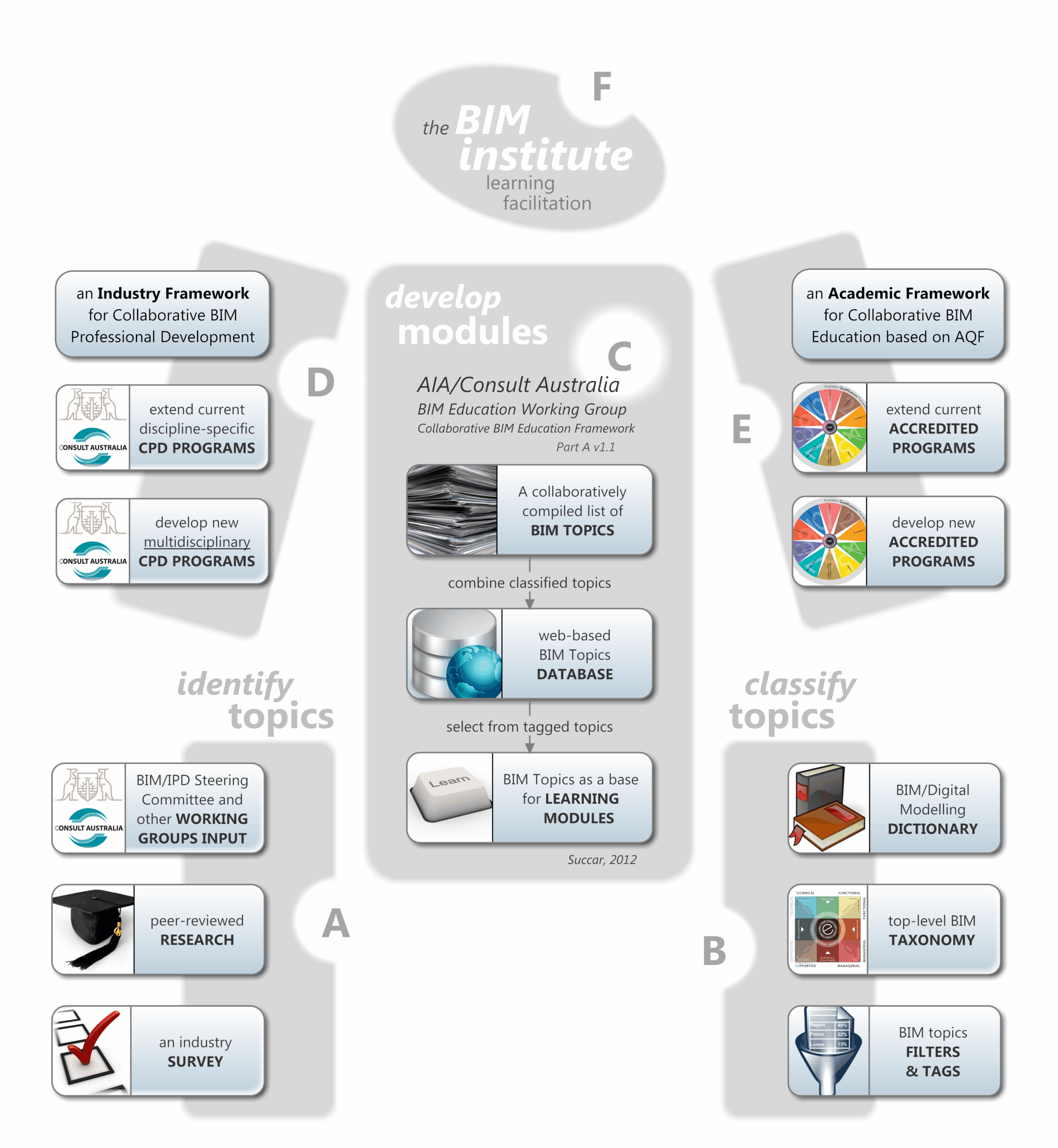
This numbered Frameworks Page covers a single Visual Knowledge Model (VKM). Refer to Tags at the bottom for content classification and source publication if any. The page may be updated to connect with newer Frameworks Pages. The number is for pages, not for content.
Published on June 3, 2014 | Last Updated on September 20, 2025
The collaborative education framework (CEF) has been developed as a joint effort between academia and industry in Australia. CEF was first published as part of the AIA/CA BIM in Practice, BIM Education position papers (AIA/CA, 2012) and is built around the principles, models, taxonomies, and classifications of the BIM Framework. CEF includes six main complementary components:
Component A. Identifying BIM Competencies
BIM competencies will be identified through peer-reviewed research, industry surveys, and the specialized knowledge and experience of industry associations.
Component B. Classifying BIM Competencies
BIM competencies will be clearly and consistently defined through a BIM dictionary clarifying BIM terms and acronyms across all topics; a syntax governing how BIM competencies are structured; a top-level taxonomy organizing BIM competency items into BIM dictionary; and a number of classifications (e.g. role groups, disciplines, difficulty levels, delivery modes, etc.) to filter BIM competencies to match learner requirements.
Component C. Collating Competencies and Developing BIM Learning Modules
A dedicated online BIM learning hub (originally BIMexcellence.net, now part of assessor.io) will be developed to collate competencies, and organize the development and delivery of BIM learning modules.
Component D. An Industry Framework for Professional Development
A cooperation framework between industry associations will be formulated to encourage BIM-focused, collaborative Continuing Professional Development (CPD) across disciplines, specialities and industry trades.
Component E. An Academic Framework for BIM Education
An academic framework for tertiary and vocational BIM education will be adopted/adapted to encourage academic institutions to contribute-to and benefit-from the BIM learning hub.
Component F. The BIM Institute
A BIM institute will be initiated to facilitate the development and delivery of BIM learning across industry sectors; develop and maintain classification systems for organizing BIM learning; develop and maintain the BIM learning hub; develop a coordination framework between professional associations for the purpose of multidisciplinary BIM training and continuing professional development; initiate BIM collaboration labs for sharing knowledge and testing/demonstrating new workflows; conduct BIM-usage surveys; publish relevant papers and reports; and act as a central social space for all BIM learners and BIM learning providers.
Cite as: BIMe Initiative (2025), '22. Collaborative Education Framework', https://bimexcellence.org/frameworks/collaborative-education-framework/. First published 3 June 2014. Viewed 8 January 2026

Beautiful work and elaborate process.